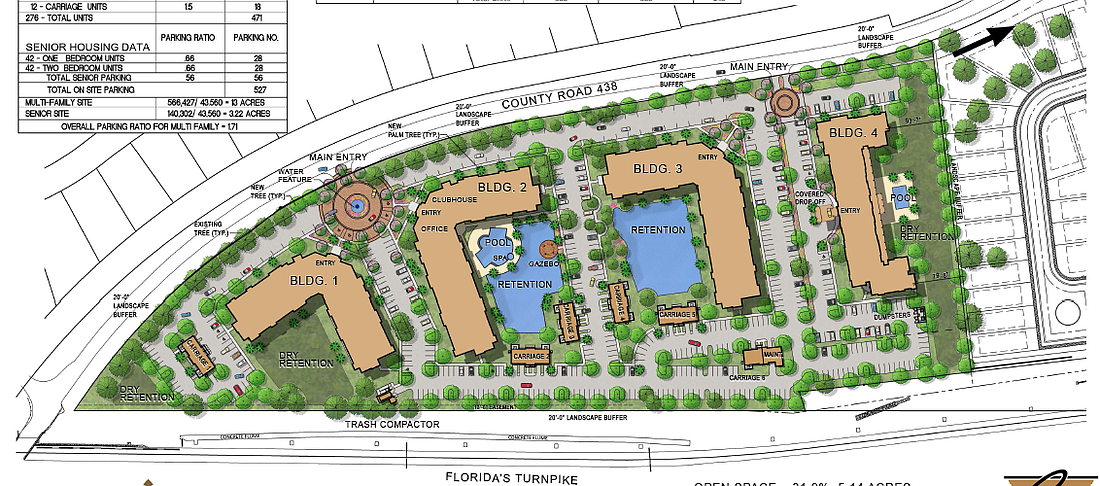- April 16, 2024
-
-
Loading

Loading

The Oakland Town Commission has approved the first neighborhood of the Longleaf community that, overall, could add close to 750 dwelling units. The multi-family residential development’s initial phase will include 276 apartments and 84 senior-housing units.
Several commissioners took issue with the amount of clapboard siding proposed on the units, citing mildew and high-maintenance concerns. They preferred to see more brick in the project.
The commission unanimously approved the site plan and the first amendment to the development agreement and the architectural elevations subject to a color rendering and the addition of brick and deletion of a portion of the clapboard siding.
The agreement includes an option for the developer to alter the number of apartments and senior units, making them closer to 180 each. This would require additional approval.
At present, there are 42 one-bedroom and 42 two-bedroom senior-housing units planned, as well as 100 one-bedroom, 112 two-bedroom and 52 three-bedroom apartments and 12 carriage units.
IN OTHER BUSINESS
• The Town Commission approved a temporary moratorium on processing applications and plans related to development until the town can develop urban design guidelines and standards to apply to new development. The new standards will apply mainly to commercial projects along West Colonial Drive and Oakland Avenue.
“People can apply but can’t go beyond that phase,” Stephen Koontz, assistant town manager, said.
The new guidelines would expand the role of the town’s Appearance Review Board to review development to comply with these guidelines.
• Elected officials tabled the second reading and public hearing regarding the Hull Island Phase 2 project until town staff has more time to consider the traffic concerns that have been presented by area residents in recent meeting. These issues range from speeding vehicles to the lack of road width for two vehicles to pass to the lack of a second entrance and exit.
Police Chief Steve Thomas said a traffic engineer is needed to look at the issues. One is expected to appear at the March 13 Town Commission meeting.
• The commission passed the second reading and public hearing for the 16-acre Oakland Commercial Center planned development, which includes a RaceTrac
• Commissioners voted to pursue a Small Cities Community Development Block Grant through a federal program that allocates dollars to eligible municipalities. Oakland, which has received CDBG grants in the past, will apply for a $1.5 million infrastructure grant and a $600,000 economic development grant.
• Public Works Director Mike Parker gave an update on the disruptive peacock situation. He has negotiated with two trappers and said someone called to inquire about adopting some of the peacocks after reading about the issue in the “West Orange Times & Observer.”